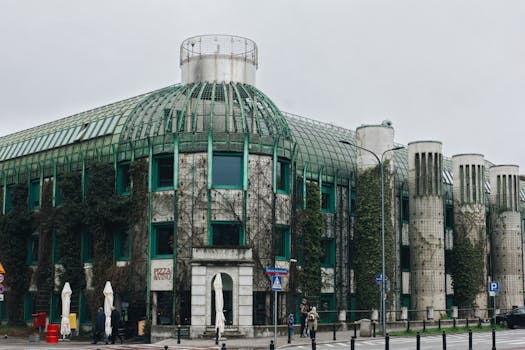
Sustainable Cities: How Europe is Shaping Eco-Friendly Lifestyles by 2025
Sustainable Cities are becoming increasingly important as the world grapples with the challenges of climate change, pollution, and environmental degradation. Sustainable Cities are at the forefront of this movement, with many European cities taking the lead in promoting eco-friendly lifestyles and reducing their environmental impact. In this article, we will explore how Europe is shaping sustainable cities and what this means for the future of urban living.
Introduction to Sustainable Cities
Sustainable cities are designed to minimize their impact on the environment while providing a high quality of life for their citizens. This is achieved through a combination of green architecture, renewable energy, and innovative transportation systems. European cities such as Copenhagen, Stockholm, and Barcelona are already making significant strides in this area, with a focus on reducing carbon emissions, increasing energy efficiency, and promoting sustainable transportation.
Key Features of Sustainable Cities
So, what makes a city sustainable? Some key features of sustainable cities include:
- Green spaces: Parks, gardens, and other green areas help to reduce air pollution, mitigate the urban heat island effect, and provide habitats for wildlife.
- Renewable energy: Sustainable cities are powered by renewable energy sources such as solar, wind, and hydroelectric power, reducing their reliance on fossil fuels and lowering their carbon emissions.
- Energy-efficient buildings: Buildings are designed to be energy-efficient, with features such as insulation, double glazing, and solar panels.
- Sustainable transportation: Cities are investing in sustainable transportation systems, including electric and hybrid vehicles, cycling infrastructure, and pedestrian-friendly streets.
- Waste reduction and recycling: Sustainable cities have implemented effective waste reduction and recycling programs, minimizing the amount of waste sent to landfills and promoting a circular economy.
European Cities Leading the Way
Many European cities are at the forefront of sustainable city development, with some notable examples including:
- Copenhagen: Copenhagen is aiming to be carbon neutral by 2025 and has implemented a range of initiatives to reduce its environmental impact, including a carbon-neutral heating system and a bike-friendly infrastructure.
- Stockholm: Stockholm has implemented a congestion tax to reduce traffic congestion and air pollution, and has also invested in a range of sustainable transportation systems, including electric and hybrid buses.
- Barcelona: Barcelona has implemented a range of initiatives to promote sustainable living, including a bike-sharing scheme, electric vehicle charging points, and a network of green spaces and parks.
Conclusion
In conclusion, European cities are leading the way in sustainable city development, promoting eco-friendly lifestyles and reducing their environmental impact. By incorporating green spaces, renewable energy, energy-efficient buildings, sustainable transportation, and waste reduction and recycling programs, cities can create a high quality of life for their citizens while minimizing their impact on the environment. As we look to the future, it is clear that sustainable cities will play a critical role in shaping our world and creating a better future for generations to come.






